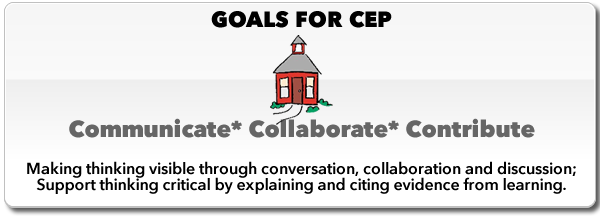
The mission of Public School 174 is to create a community of learners through nurturing and stimulating educational experiences. With technology, STEM and arts integration we enhance student engagement, support instructional practices, and provide improved communication and presentations skills for all.
By recognizing and embracing the diverse cultures represented in our school, students realize the importance of mutual respect and understanding. Civic responsibility is developed through service projects that reach out to others - building up both students and the community.
Parent involvement is a vital part of the school. It complements and supports the professional teaching children receive.


Based on feedback from PPO visits from District Administration; from School Walkthroughs and Observation Reports; from School Quality Guide; from staff feedback parent surveys, parent feedback forms.
Goal 1 - Element: Rigorous Instruction (ELA)
By June 2020, there will be an increase of 10% of students from grades K-5 meeting their stretch annual growth goal from Fall 2019 as measured by the Spring 2020 ELA i-Ready Computer Adaptive Assessment scores.
Goal 2 – Element: Rigorous Instruction - Math
By June 2020, there will be an increase of 10% of students from grades K-5 meeting their stretch annual growth goal from Fall 2019 as measured by the Spring 2020 Mathematics i-Ready Computer Adaptive Assessment scores.
Goal 3 – Element: Chronic Absenteeism
By June 2020, there will be an increase in the number of parent outreach supports and workshops offered to parents whose children are chronically absent as measured by participation attendance records.
Goal 4 – Element: English Language Learners
By June 2020, there will be an increase of 3% of students from grades 3-5 meeting proficiency levels from June 2019 as measured by the 2020 New York State English Language Arts Exam.
Goal 5 – Element: Students with Disabilities
By June 2020, there will be an increase of 3% of Students with Disabilities meeting their typical annual growth goal from Fall 2019 as measured by the Spring 2020 ELA i-Ready Computer Adaptive Assessment scores.

Goal 1 - Element: Rigorous Instruction (ELA)
By June 2020, there will be an increase of 10% of students from grades K-5 meeting their stretch annual growth goal from Fall 2019 as measured by the Spring 2020 ELA i-Ready Computer Adaptive Assessment scores.
Data Alignment:
- Our state data indicates a 2% increase in proficiency as measured by the 2019 ELA (66% to 68%).
- During the 2018-19 school year, 57% of students in grades K-5 met their typical annual growth goal in reading as measured by the i-Ready Computer Adaptive Assessment scores. Typical growth is the average growth for a student at their current grade and placement level.
- During the 2018-19 school year, 34% of students in grades K-5 met their stretch annual growth goal in reading as measured by the i-Ready Computer Adaptive Assessment scores. Stretch growth ia an ambitious but attainable level of annual growth which puts below grade level students on a path toward proficiency OR on and above grade level students on a path to achieve/maintain advanced proficiency levels.
Action Plan:
• I-Ready Computer Adaptive Assessment Schedule (3x’s a Year)
- Diagnostic 1: Week of September 9th
- Diagnostic 2: Week of January 6th
- Diagnostic 3: Week of May 4th
• I-Ready Computer Adaptive Assessment Data Dives (Professional Learning and Grade Meetings
- Data Dive 1: Week of September 23rd
- Data Dive 2: Week of January 13th
- Data Dive 3: Week of May 11th
Budget Considerations:
• NYSTL Allocations - Purchase of i-Ready software for ELA All Grades
• School Program Schedule - includes common planning and professional learning time for grades, Special Education, Gifted, and Vertical Planning Teams

Goal 3 – Element: Chronic Absenteeism
By June 2020, there will be an increase in the number of parent outreach supports and workshops offered to parents whose children are chronically absent as measured by participation attendance records.
Data Alignment: The performance index from 2018 indicates that chronic absenteeism is higher than the targeted MIP in the ELL and SWD student population, however 85% of all students have 90%+ attendance. Additionally, our ESSA data indicates a decrease in student absenteeism for ELL students from 2017 (68%) to 2018 (65%).
Action Plan:
- Parent Outreach - Jennifer Chan, Department of Health and Wellness
- Parent Outreach – Attendance Teacher
- Parent Outreach – Laura Hui, Parent Coordinator
Budget Considerations:
Tax Lexy Funds – Guidance counselor (2 days)
Attendance teacher – 1 day per week
NYC Department of Education support – Health and Wellness services
Queens South Support – Office of Youth and Development – as needed for PL and school support

Goal 4 – Element: English Language Learners
By June 2020, there will be an increase of 3% of students from grades 3-5 meeting proficiency levels from June 2019 as measured by the 2020 New York State English Language Arts Exam.
Data Alignment:
• Our 2019 state assessment data indicates that 67% of our ELL students are proficient in mathematics, however only 25% are achieving proficiency in ELA.
• The i-Ready diagnostic report also shows that ELL students are not meeting the typical growth goal.
• Other measures of assessment show that these students are coming into testing grades with a deficit in reading fluency and accuracy which is specifically effecting their ability to comprehend.
Action Plan:
• Scheduled Data Dive With ELL Teachers (Instructional Report, Item Analysis, and I-Ready Computer Adaptive Assessment Data)
• Literacy Coach (Planning and Instruction)
• Vertical Team Meetings (ELL Teachers)
Bi-Weekly Meetings
Grades K-2
Grades 3-5
Budget Considerations:
• NYSTL Allocations – Purchase of i-Ready software - All Grades
• School Program Schedule - includes common planning and professional learning time for grades, Special Education, Gifted, and Vertical Planning Teams.

Goal 5 – Element: Students with Disabilities
By June 2020, there will be an increase of 3% of Students with Disabilities meeting their typical annual growth goal from Fall 2019 as measured by the Spring 2020 ELA i-Ready Computer Adaptive Assessment scores.
Data Alignment:
• Our 2019 state assessment data indicates an increase in mathematics proficiency for SWD, however a decrease in ELA proficiency for SWD from 31% in 2018 to 25% in 2019.
• Our school’s performance 2018 index indicates that Students with Disabilities are not showing sufficient growth.
• The i-Ready diagnostic report also shows that students with disabilities are not meeting the typical growth goal.
• Other measures of assessment show that these students are coming into testing grades with a deficit in reading comprehension – specifically the ability to infer and synthesize.
Action Plan:
I-Ready Computer Adaptive Assessment Schedule (3x’s a Year)
- Diagnostic 1: Week of September 9th
- Diagnostic 2: Week of January 6th
- Diagnostic 3: Week of May 4th
I-Ready Computer Adaptive Assessment Data Dives (Professional Learning and Grade Meetings)
- Data Dive 1: Week of September 23rd
- Data Dive 2: Week of January 13th
- Data Dive 3: Week of May 11th
Vertical Team Meetings (ICT Teachers)
Bi-Weekly Meetings
Budget Considerations:
- NYSTL Allocations – Purchase of i-Ready software - All Grades
- School Program Schedule - includes common planning and professional learning time for grades, Special Education, Gifted, and Vertical Planning Teams.
- i-Ready June Instructional Reports - Math and Reading...
Three Highlights
- 1. On average 64% of the students in grades 2-5 met their typical growth goal in math and 65% in reading. Typical growth is the average growth for a student at this grade and placement level.
- 2. On average 36% of the students in grades 2-5 met their stretch growth goal in math and 40% in reading. The stretch growth goal is a much more ambitious level of annual growth.
- 3. Across all grades in reading there was approximately a 24% increase and in math a 35% increase in the number of students who were identified as achieving at or above grade level when comparing fall to spring diagnostic results.
Areas of Improvement
- 1. Only 30% of our kindergarten students met their annual typical growth goal in reading and only 29% in math .
- 2. Overall “vocabulary” is an area of reading instruction in which the largest percentage of students are achieving below grade level.
- 3. Overall “geometry” is an area of math instruction in which the largest percentage of students are achieving below grade level.
Need the focus areas for both ela and math from the june instructional report – NYS test data
Which standards, skills, or concepts…….
Who is William Sidney Mount?
William Sidney Mount, (born November 26, 1807, Setauket, Long Island, New York, U.S.A, and died November 19, 1868, Setauket), American genre painter who mainly depicted rustic life in his native Long Island. He was one of the first and best 19th-century anecdotal painters in the United States.
A farm boy until age 17, Mount apprenticed himself to his older brother Henry, a sign painter working in New York City. They were joined by another brother, Shepard Alonzo, who eventually became a portrait painter. In 1826, when the National Academy of Design opened drawing classes, Mount was one of its first students and was elected an associate member in 1831 (he became a full member in 1832). He stayed only a year before returning to Setauket, where he continued painting and sending work to be exhibited in New York, where it received great acclaim.
Although Mount began his career by painting historical subjects, soon after returning to Setauket he began to explore the social manners and rituals of rural life in his work, an approach known as genre painting. His first genre painting, The Rustic Dance (1830), was an immediate success, and Mount never departed from this vein. He did not sentimentalize his scenes but rather portrayed his subjects with naturalness and simplicity. His paintings often commented on American social and political issues, as seen in his exploration of temperance and the abolition of slavery in Bar-room Scene (1835). The recognizable situations and detailed, representational character of Mountains paintings struck a responsive chord in Victorian America and now serve as a valuable record of a bygone, agrarian age.







